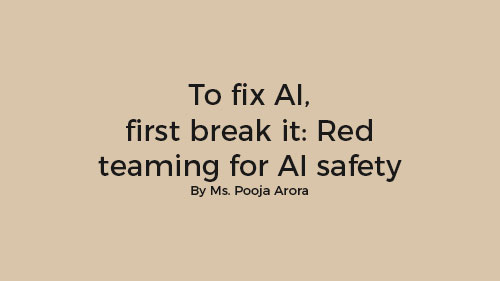
Jindal School of International Affairs
| Room No | |
| Languages | English Hindi |
| Key Expertise |
Artificial intelligence is transforming society at an unprecedented pace, from generative chatbots in customer service to algorithms aiding medical diagnoses. Along with this promise, however, come serious risks – AI systems have produced biased or harmful outputs, revealed private data, or been ‘tricked’ into unsafe behaviour. In one healthcare study, for example, red-team testing found that roughly one in five answers from advanced AI models like GPT-4 was inappropriate or unsafe for medical use. To ensure AI’s benefits can be realized safely and ethically, the tech community is increasingly turning to red teaming – a practice of stress-testing AI systems to identify flaws before real adversaries or real-world conditions do.
In simple terms, red teaming is about playing ‘devil’s advocate’ with AI systems – actively trying to break, mislead, or misuse them to expose weaknesses. Originally a military and cybersecurity concept, red teaming refers to an adversarial testing effort where a ‘red team’ simulates attacks or exploits against a target, while a ‘blue team’ defends. In the AI context, AI red teaming means probing AI models and their surrounding systems for vulnerabilities, harmful behaviours, or biases by emulating the strategies a malicious or curious attacker might use.
| Published Date | 06-07-2025 |
| Category | News |